If you can’t see a production of Shakespeare’s play A Midsummer Night’s Dream in a woodland setting during a long June twilight, as I once did, you can be enthralled by a different sort of magic conjured up by the Bard’s plot. George Balanchine’s 1962 ballet of the same name ended its week in the New York City Ballet’s season before American Ballet Theatre hit the solstice dead on with Frederick Ashton’s 1964 The Dream. These are two such beautiful ballets that I wish I could have crossed Lincoln Center Plaza from an NYCB matinee in the former New York State Theater to an evening ABT performance at the Metropolitan Opera—maybe with a long, cool drink on the way
Balletomanes may debate which of the two ballets they prefer. Each presents, with comic flair, the ruckus accidentally stirred up by Oberon, King of the Fairies, and his sprightly elf servant, Puck (they were, after all, only trying to make everything turn out happily for two pairs of troubled lovers wandering in the forest). Each ballet boasts a sweetly comical pas de deux for Titania and Bottom the Weaver, whom the angry Oberon, to teach his queen a lesson, has transformed into an ass. Each work ends with glorious pas de deux.
Both ballets are wondrously designed. In David Hays’s set for Balanchine, the forest acquires giant leaves when a change from the human world to the domain of the fairies is indicated. David Walker’s design for Ashton remains the same throughout, with a root-girded stairway descending to the stage and a moon glimpsed through trees. The comparative length of the two ballets dictates some of their differences. Balanchine created a full-evening work, making use not just of Felix Mendelssohn’s overture and incidental music, but music drawn from other works by the composer. The audience hears the full overture before the curtain goes up and then hears it all over again in the ballet’s opening scene. Ashton’s work is more compact and shares a program with another ballet or two (in this case, Alexei Ratmansky’s new Firebird).
Balanchine, who as a little boy played a forest sprite in the Mariinsky Ballet’s production of A Midsummer Night’s Dream, introduces a bevy of tiny children, adorably costumed (by Karinska) as various woodland insects and butterflies. He also observes certain 19th-century ballet conventions—wrapping up the story in Act I and constructing Act II as a wedding celebration at court, with all the characters re-appearing, plus group after group of sprightly courtiers in various pastel shades, and a couple with no roles in the story, who dance the final pas de deux. He also introduces in the first act, a “cavalier” who has no purpose but to support Titania in a duet (you’d think Oberon would be jealous, but, no, he’s more concerned with getting Titania’s little page for his own).
One of the delights of Ashton’s ballet is that the fairies, with enchanting costumes by Walker, evoke the lithographs of 1830’s Romantic ballet. Led by Shakespeare’s Cobweb, Peaseblossom, Moth, and Mustard Seed, they tilt their bodies and wreath their arms like latter-day Taglionis. They’re picture-perfect at the hand-to-ear gesture that says, “Hark, I hear someone coming.” But they’re not just pretty and airy, given to flying jumps; when they run in and spot their mistress, Titania, amorously involved with a donkey, they turn dumbstruck faces to the audience.
In addition to dispensing with Hermia’s irate father (it’s complicated), Ashton eliminates Theseus, Duke of Athens, and his bride-to-be, Hippolyta. Balanchine doesn’t; Hippolyta (I saw Teresa Reichlen) leaps through the clearing, a huntress, her bow drawn, accompanied by a cadre of masked hounds, while a thick fog obscures the floor, and Puck copes with getting Lysander and Demetrius to stop staggering around having at each other with swords. Needless to say, both choreographers create ingenious and comical tangles for the lovers, whose saga goes like this: Hermia loves Lysander, and he loves her. Helena loves Demetrius, but he loves Hermia. In Balanchine’s ballet, Demetrius (Amar Ramasar, in the June 5th cast) grabs the persistent Helena (Janie Taylor) by the hand and spins her around him as if he’s winding up to toss her as far as he can. Balanchine also gives Helena a touching moment alone.
After Puck’s inadvertent mischief with the magic floral elixir that Oberon ordered, both Lysander and Demetrius pursue Helena and spurn Hermia. They fight. Both ballets feature a threesome, in which the two men have a tug of war with Helena as the prize in the middle.The cast members of the squabbling foursome performed excellently in both productions. Robert Fairchild and Abi Stafford took on Balanchine’s Lysander and Hermia, while the lovers in Ashton’s forest were danced by Stella Abrera (Hermia), Jared Matthews (Lysander), Maria Riccetto (Helena), and Sascha Radetsky (Demetrius). Abrera and Matthews played to perfection their little scene in which his ardency meets her firmly expressed virgin propriety, and he reluctantly beds down at some distance from her patch of grass.
One aspect of Shakespeare’s tale that’s amplified in any ballet on which it’s based: the humans can’t see the fairies, no matter how much the latter flutter and leap around them. Puck’s invisibility makes for some good jokes. And, as a meddler in destinies, he has a lot to accomplish. Daniel Ulbricht is an obvious choice for NYCB’s Puck; he has a terrific jump and projects an impish, naughty-boy charm. When he’s hoisted by invisible ropes over the Act II celebration in lieu of Puck’s final “Give me your hands if we be friends. . .” speech, you can imagine a victorious soccer hero being carried on his teammates’ shoulders.
Herman Cornejo as Ashton’s Puck tells a different story; he truly seems to be a creature from another world. When he crouches to await Oberon’s command, you sense a more primal side to his nature, but Cornjeo also ignores gravity—soaring into leaps and jumps without apparent effort. He spins off an impossible number of perfectly centered pirouettes and stops with one foot still off the ground. Fond but fearful with Oberon, head-scratchingly confused about which lover is which, and a whirlwind in pursuit of his goals—Cornejo gets under Puck’s mischievous skin, as he does with every role or style he essays.
Balanchine’s Rustics come on with props prepared to rehearse the play-within-a-play we never see, while Ashton creates a short, rambunctious dance for his, at the end of which Puck turns Bottom into as ass and sprinkles the sleeping Titania’s eyes with the flower juice so she’ll love the first living thing she lays eyes on. Both these duets are delicious. ABT’s Bottom (Alexei Agoudine—excellent) trots about on black pointe shoes, a fine simulacrum of hooves. NYCB’s (Adrian Danchig-Waring—also excellent) has a much better donkey head. The lovely Titanias (NYCB’s Maria Kowroski and ABT’s Xiomara Reyes) adore their puzzled but happy suitor, supply him with fodder, ride him, or stroke his soft ears before bedding down with him. Instead of the seductive melody Ashton uses, Balanchine sets his comic duet to Mendelssohn’s heart-swelling Nocturne.
Ashton and Balanchine conceived the fairy rulers differently. Ashton created his Oberon on the Royal Ballet’s Antony Dowell with Antoinette Sibley as his Titania. ABT’s Cory Stearns, is a danseur noble (as Dowell was), tall and imperious, while Reyes is a defiant queen but a delicious flirt, tossing her curls impetuously. Balanchine was seduced by sources that portrayed Oberon as a dwarf or elf and although his original Titania, played by Melissa Hayden, wasn’t taller than her partner, Edward Villella, subsequent casts have always had a smallish Oberon and a tall Titania. At the performance I attended, Kowroski was paired with Joaquin de Luz, who performs wonderfully in an amazing solo that bounds high and is full of quicksilver foot trickery. As Ashton’s Oberon, Stearns also has splendid solo passages, with elegant spins and jackknifing jumps that he looks magnificent performing.
Balanchine’s royal pair do more arguing than dancing together. The pas de deux than crowns Act II is performed by two people who haven’t appeared before. Hermia and Lysander, Helena and Demetrius, Hippolyta and Theseus are joined in marriage amid a spree of festive courtly dancing that goes on for rather a long time. The unnamed man and woman appear, like summoned entertainers. They are anything but that. Everyone leaves the stage, as if dinner is being served elsewhere, and these two (I saw Wendy Whelan and Jared Angle) are left alone to dance a magnificent pas de deux that expresses in complex ways the ideal love that has, until now, eluded Shakespeare’s three couples. The two begin companionably with swift, buoyant steps, and gradually move into more rapturous, intimate comings together, yet they never lose the courtliness that a classical pas de deux requires. Within this structure, Whelan is all gossamer, spooling out her steps in response to her ardent partner.
Ashton preferred to have Oberon and Titania perform the final duet—she chastened and in love with him all over again, Oberon gentle but masterful, now that their differences have faded away and the night edges toward dawn. The choreographer saved the Nocturne for them and turned their reunion into a seduction pervaded by a sweet and compelling eroticism. Titania’s little frissons of delight in her mate’s embrace gradually subside; you feel her limbs getting heavy with desire as Oberon slowly walks her along, sliding her into splits that seem to get deeper and deeper.
I love Balanchine’s ballet. I’m in love with Ashton’s.

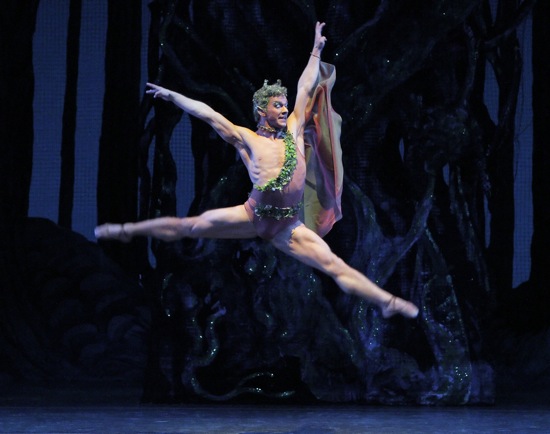
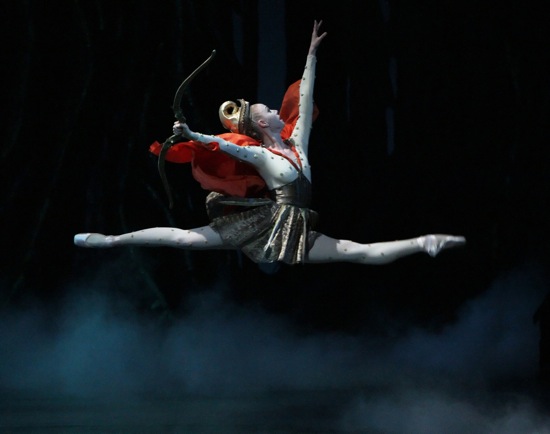
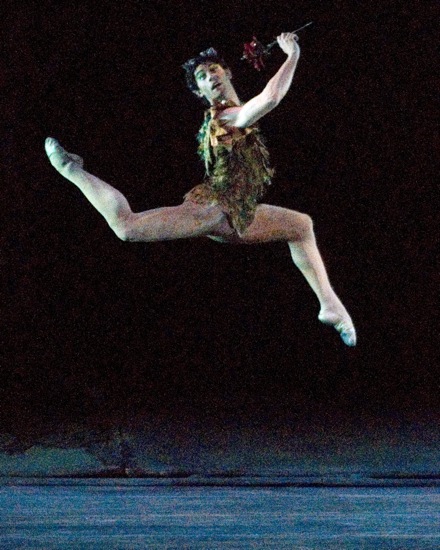
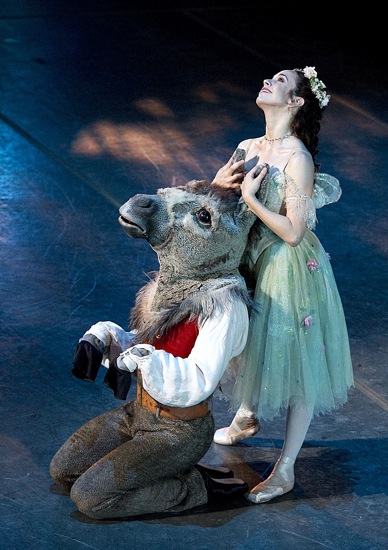
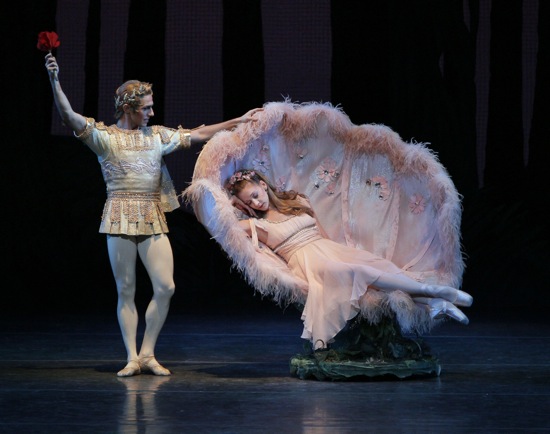
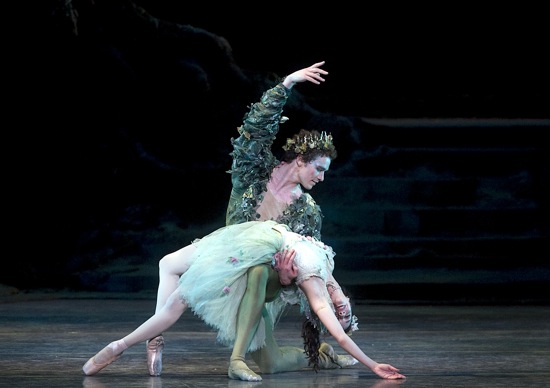
A wonderful analysis of the two. I too find my heart leaping for one and then the other. Both have such magical elements, both are really among the most inspired works on the ballet stage. I’ll take Balanchine’s fireflies and second act pas de deux and Ashton’s nineteenth-century fairies and domestic squabbles and sexy reconciliation.
Dear Deborah
Thank you for this detailed comparison of the two ballets. I agree with your conclusion: Ashton’s final pas de deux is surely one of the greatest in all modern ballet. One small point: it’s Oberon who sprinkles the flower juice into Titania’s eyes. I only mention it because he does it so perfectly with the music. And then Puck does the same thing musically when correcting his mistake later. The fairies also show that they are more than pretty little things in their contemptuous exit following Titania after she has beaten Oberon to possession of the little Indian boy. The ballet is so full of riches that even a detailed description can’t contain everything!
David
And I love this eloquently written essay on the enchantments offered by both Ashton’s and Balanchine’s Terpsichoreoan renderings of Shakespeare. Thank you Deborah.
What a pleasure to read such a detailed and insightful comparison of the two ballets. I was delighted to attend an ABT performance of Ashton’s version during the Dance Critics conference. Although I have not seen Balanchine’s version for many years, I replayed every scene in mind, thanks to the vivid description, Sitting at my computer in Cleveland, I felt as though I had just strolled across the Lincoln Center Plaza and seen both ballets back-to-back.
Excellent read on both ballets.
I am in total agreement – I am in love with Aston’s creation as well.
Have you seen the original dancers dance this?
Anthony/Sibley, Alexander Grant and many other Royal dancers?
Whenever I hear the music, even just the first note, I expect to see Dowell.
This is carved into my brain.
Thank you, Julia. Margaret Dale made a fine film of the original cast, back in black-and-white days. There’s also a later film of the Royal with Dowell and Merle Park. He’s carved into my brain as well.